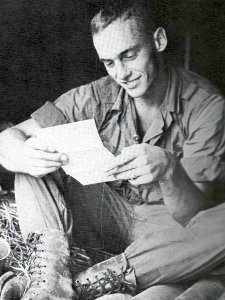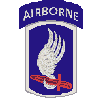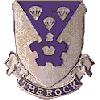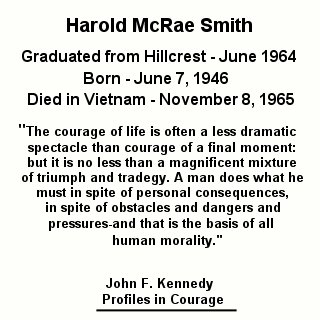| |
|
|
|
Harold Mc Rae Smith
Private First Class
C CO, 1ST BN, 503RD INFANTRY, 173RD ABN BDE, USARV Army of the United States Sumter, South Carolina June 07, 1946 to November 08, 1965 HAROLD M SMITH is on the Wall at Panel 3E, Line 36 See the full profile or name rubbing for Harold Smith |
   |

|



| |

PFC HAROLD MC RAE SMITH
|
To Harold,I miss you so, old friend. When in church I thank God for sharing you with me during the brief time we laughed together in our youth in 1960-1962. Remember when you danced with my Mom at Shaw AFB's Teen Club and made her feel like a teenager again? She loved it, and we all, especially you through your freckled good looks, unabashed charm, and dashing smile, had a good laugh at your loud aftershave--you had accidentally poured too much of it on yourself! Then there was the night of your big party. Your Dad took care of us 14-year-old guys, your Mom the girls. After midnight your Dad let us stay up to brag and talk about girls around the pond next to your rustic home about half a mile off the Columbia-Sumter highway across from Shaw AFB. Late that night in the early a.m. you, Sam Soogoff, a couple of the other guys and I walked out to the highway to a small, local juke joint to see if anyone would buy us a bottle of wine. We were so determined and innocent. As we stood outside listening to the curious mixture of the blues and the rumble of Shaw's jets glowing in the night sky, one of the patrons about to enter the front door, who was much amused with us, suddenly said to me, "You Wilburson!" I responded, "What?!" With growing amusement and emphasis he again said, "You Wilburson!" What he had meant was that I was Wilburn's son; he had often caddied for my Dad who was a kind of working-class scratch golfer. Our new-found friend had remembered me breaking 90 while my Dad's sharp eye and impatient tongue exclaimed yet again, "Can't you see...; can't you do...?" We all laughed and celebrated when he graciously agreed to take all the money we could scrounge, go inside and buy us a bottle of wine. What elation, Harold, what good fortune. We then returned to your pond with our great victory in hand. Each of us touched the prize, and there was just enough wine to have a symbolic impact in our boyish heads. Then as a growing mist hovered over the pond and our shoreline fire dimmed, the night sky began to lighten. Suddenly we all crashed only to be shortly awakened and refreshed by your Mom's terrific breakfast. We grew up a bit that night, Harold, in the summer of 1960, the summer before our freshman year in high school. Then while I was studying history as a college sophomore in 1965, you were killed in action--the pathos of it all only increases with experience. Just know that you live on with me, in me, and in songs my Viet-Nam veteran band mate and I have written. Here is one of your verses from our song, "The Wall":
On Panel 3
American Wall Harold, you are a hero. So are all of the 58,000 Vets who keep eternal vigil with you. Your collective heroism beckons me each time I raise my eyes to South Carolina's 8th star and stripe on our flag, embellished by you in any breeze at any time on any government flagpole in any state in the USA, and yes, today, again snapping to in our embassy compound in Viet-Nam. God bless, Harold, God bless.
Friends Forever, |
A Note from The Virtual WallOn 05 Nov 1965 the 173rd Airborne Brigade initiated "Operation Hump", a reconnaissance in force in an area about 15 miles north of Bien Hoa. The 1st Battalion, Royal Australian Regiment, deployed south of the Dong Nai River while the 1st Battalion, 503rd Infantry, conducted a helicopter assault on a LZ northwest of the Dong Nai and Song Be Rivers. Little contact was made through 07 Nov, when B and C Companies settled into a night defensive position southeast of Hill 65, a triple-canopy jungled hill.At about 0600 on the morning of 08 Nov, C Company began a move northwest toward Hill 65, while B Company moved northeast toward Hill 78. Shortly before 0800, C Company was engaged by a sizable enemy force well dug in to the southern face of Hill 65. At 0845, B Company was directed to wheel in place and proceed toward Hill 65 with the intention of relieving C Company. B Company reached the foot of Hill 65 at about 0930 and moved up the hill. Three things soon became obvious:
Meanwhile, the NVA commander realized that his best chance was to close with the US soldiers so that the 173rd's air and artillery fire could not be effectively employed. He attempted to out-flank the US position atop the hill from both the east and the southwest, moving his troops closer to the Americans. The result was shoulder-to-shoulder attacks up the hillside, hand-to-hand fighting, and isolation of parts of B and C Companies ... but the Americans held against two such attacks. Although the fighting continued after the second massed attack, it reduced in intensity as the NVA commander again attempted to disengage and withdraw. By late afternoon it seemed that contact had been broken off by the enemy, allowing the two companies to prepare a night defensive position while collecting their dead and wounded in the center of the position. Although a few of the most seriously wounded were extracted by USAF helicopters using Stokes litters, the triple-canopy jungle prevented the majority from being evacuated until the morning of 09 Nov. The result of the battle was heavy losses on both sides - 50 Skytroopers dead, many more wounded, and 403 dead NVA troops. PFC Harold Smith was one of the 50 Americans who died. |
| Contact Us | © Copyright 1997-2019 www.VirtualWall.org, Ltd ®(TM) | Last update 08/15/2019 |